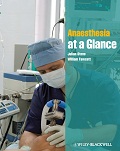A 31-year-old woman presents in A&E with a ruptured ectopic pregnancy and is scheduled for an emergency laparotomy. She is pale, sweaty with a pulse rate of 140 bpm and a blood pressure of 80/50 mmHg.
-
1. Describe your initial management
Show Answer
Correct answer: Along the ABC lines of resuscitation: oxygen, i.v. access and resuscitation with fluids until blood available, take blood for blood count and cross match. In addition, further monitoring may require arterial and central venous access and urinary catheterization.
-
2. Should the patient be fully resuscitated prior to theatre?
Show Answer
Correct answer: Ideally yes, but in practice this may be not be possible due to continuing blood loss. The safest option may be to stop the bleeding as soon as possible following which resuscitation will be far more effective.
-
3. The patient has not eaten for 8 hours: will rapid sequence induction be required?
Show Answer
Correct answer: Almost all emergency patients will require rapid sequence induction of anaesthesia, even if fasted. Major physiological stress, the administration of opioids and any intraperitoneal catastrophe all potentially prevent gastric emptying.
-
4. The patient has a reduced level of consciousness. How might consent be obtained?
Show Answer
Correct answer: It is likely consent can be obtained in the usual way. However, in certain circumstances it may not be possible as the patient lacks capacity (e.g. unconscious or affected by drugs, or even some ongoing psychiatric/ psychological problems). However, in some emergencies oral consent may be obtained. In more severe emergencies, treatment can occur without consent if it is necessary to save their life or prevent a serious deterioration in their condition. This should be recorded carefully in the notes.
-
5. What monitoring will you prepare for theatre?
Show Answer
Correct answer: Standard monitoring and, in addition, arterial and central venous access. If available, cardiac output monitoring should be carried out (e.g. oesophageal Doppler). Temperature monitoring is also useful. Regular haematological (FBC and clotting) will be required to dictate the need for blood products and regular biochemical monitoring will give information on adequacy of tissue perfusion (e.g. lactate and base excess levels on arterial blood gas analysis).

